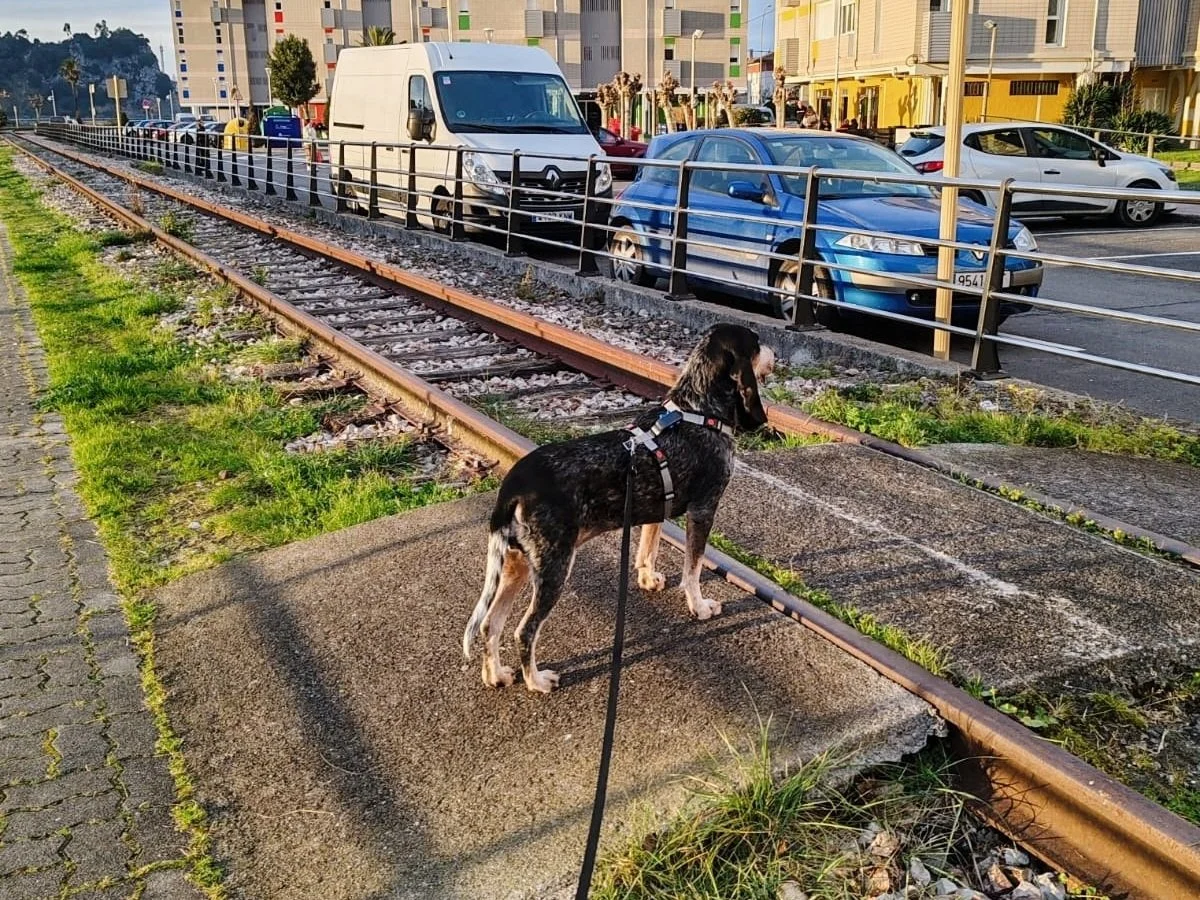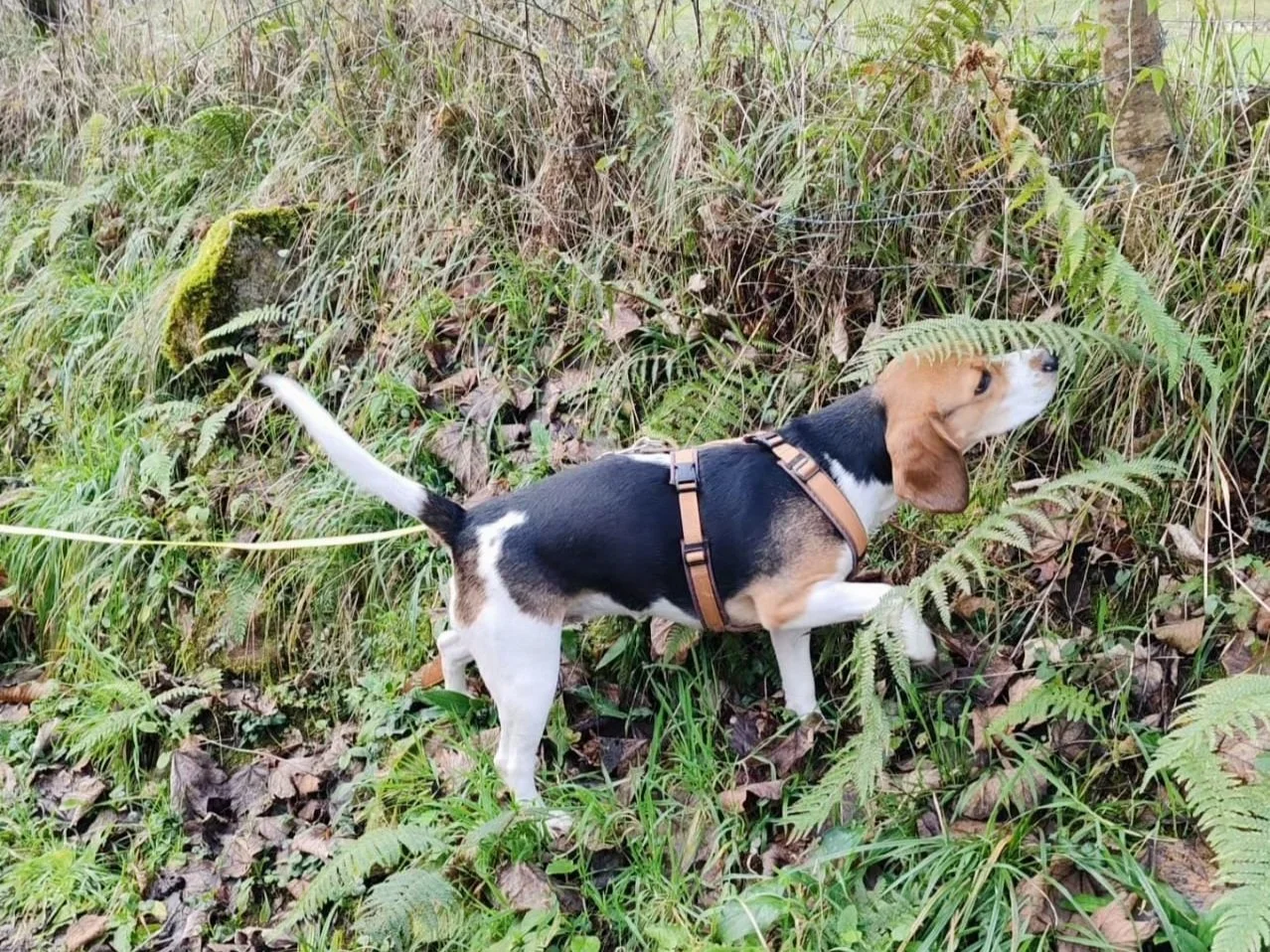Why won’t my dog slow down?
The idea of a slow and leisurly Smiling Leash walk with lots of sniffing and exploring sounds wonderful, but many dog guardians struggle with putting it into practice. Their dog is always hurrying on, not really taking in her environment, often also pulling on the leash.
Do not worry, there are ways to help our frantic fourlegged friends. They start with a little bit of detective work. We have to identify the reasons behind the behaviour.
The cause might be physical
We can start by considering the physical aspects. Is our dog wearing a well-fitted H-type (Y-front) harness and a long leash? An ill-fitting harness or a collar is likely to cause more pulling as the dog may be trying to get away from the physical discomfort, or is simply not in a relaxed frame of mind that would facilitate slow, mindful exploring. If the harness is as it should be, a longer leash might be the answer - it very often is! We suggest beginners start with a 4 m (13 ft) leash and then move onto longer leashes, such as 5 or 10 m (16 to 32 ft), if the environment allows it.
Furthermore, let's look at the body. The dog might be experiencing discomfort due to a physical problem, and that may affect both her movement and frame of mind. Did you know that dogs with poor balance tend to pull more on the leash? Learning to observe our dogs and enlisting the help of a good veterinarian or soft tissue, movement and posture specialist might shed some light on this issue.
Read more about why we only recommend harnesses, how they affect the body, movement and behaviour, and how to choose leashes.
How about stress?
A lot of things may contribute to our dog's stress level. If the environment where we take our walks is busy with sounds or movement, that may be the reason our dog is finding it difficult to slow down. Try walking in different environments for a while to see if there is a change.
Speaking of environments, long, monotonous straight lines, such as roads and curbs, may encourage more hurrying and pulling while varied terrain will entice our dog to explore and move in a slower, more mindful way. More things to sniff and investigate, like bushes, trees, and various objects, will cause dogs to slow down, while bare environments do the contrary, so sometimes it's enough to move to the edge of the space. Time to leave the road and venture into the unknown!
The walk may simply be too long. Tired dogs are a bit like tired children - what they really need is a nap, but they are getting more and more frantic by the minute. Especially if we find that our dog is sniffing less and hurrying more near the end of the walk, this might be the issue. Try taking shorter walks and see what happens.
Stressful things that happen outside the walk can also be a factor. Causes can be things like spending a lot of time alone, visitors, loud households, obedience and punitive training, dog sports and activities like fetch and running alongside a bike or person. Not only do these things cause a surge in stress hormones which persist in the body for some time, they also create habits. If we spend our time asking our dogs for fast, explosive activities, we can't really expect them to suddenly slow down for a walk. Instead, let's introduce more slow, thoughtful activities into their daily routines, such as simple nosework (like treat searches), observation, and rest.
Last but not least, we may be the cause!
Dogs observe us all the time and what we do impacts their behaviour more that we might know. Studies have shown that our speed of walking is one such thing. The faster we walk, the faster our dog will move - even if she is off leash or in front of us. Let's try to really slow down and see what happens. It's also important to stop and wait each time our dog stops to sniff something, relieve herself or observe, so she does not feel rushed.
To be clear, most dogs do like and need to run around a bit. As long as they are doing this by their own choice and it is not unhealthy or excessive, it is not a cause for concern. But they also need to be able to slow down - and we can help them by providing the right circumstances.
All dogs can and should enjoy lovely, relaxed Smiling Leash walks. It may take some time to change old habits, but we can tell you from personal and professional experience that it can be done and the results are fantastic.



